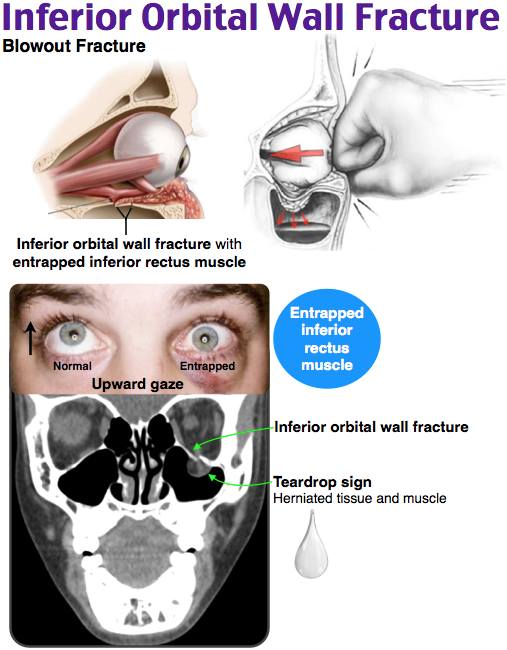Announcing the Certified Emergency Nurse Certification Exam Qbank

The Certified Emergency Nurse (CEN) Certification Exam Qbank is the newest Rosh Review Qbank for nursing. It contains 400+ (and counting) board-style questions that align with the BCEN content outline and will give you the confidence and preparation you need not only to pass your exam, but to care for your patients.
Every question includes comprehensive explanations for the correct and incorrect answer choices. Plus you’ll enhance your learning with teaching images and tables (some say the “most beautiful explanations on the planet!”), One Step Further™ questions (to reinforce learning points), and Rapid Reviews™ (like having digital flashcards).
Here’s a sample question and explanation:
A 25-year-old man presents with facial trauma after an assault. Examination reveals right periorbital ecchymosis and edema with tenderness to palpation. He has limited movement of the right eye with attempted upward gaze and decreased sensation over the right cheek. Which of the following fractures is most likely in this patient?
A. LeFort II fracture
B. Nasal fracture
C. Orbital floor fracture
D. Zygomatic arch fracture
Answer C
Orbital floor fractures are common after blunt trauma to the eye and require less force than medial or lateral wall fractures, given the thin bone in this area. Patients may present with enophthalmos (a sunken or depressed globe), pain, swelling, infraorbital anesthesia (from injury to the infraorbital nerve), and impairment of upward gaze (from entrapment of the inferior rectus muscle) with diplopia on upward gaze. There should be a thorough evaluation for other injuries, and the eye should be assessed carefully for signs of injury. A CT scan can support the diagnosis, and management involves consultation with a plastic surgeon and ophthalmology, as surgical repair is indicated in certain cases.

A LeFort II fracture (A) involves the maxilla and palate, leading to mobility of the hard palate and nose. The diagnosis can be supported with a CT scan. Patients with nasal fractures (B) present after trauma to the nose with a visible deformity. If presenting early without significant edema, reduction can be attempted in the ED. All patients must follow up with ENT. Zygomatic arch fractures (D) present with flattening of the malar eminence with tenderness to palpation in the setting of blunt trauma. A CT scan of the head and facial bones can support the diagnosis, and plastic surgery is needed for definitive management.
One Step Further question:
What complication of a nasal fracture presents with a swelling or bluish mass along the nasal septum?
One Step Further answer:
Septal hematoma.
Try a free trial of the CEN Qbank to see if it’s the right fit for you.
Study on,
The Rosh Review Team





Comments (0)